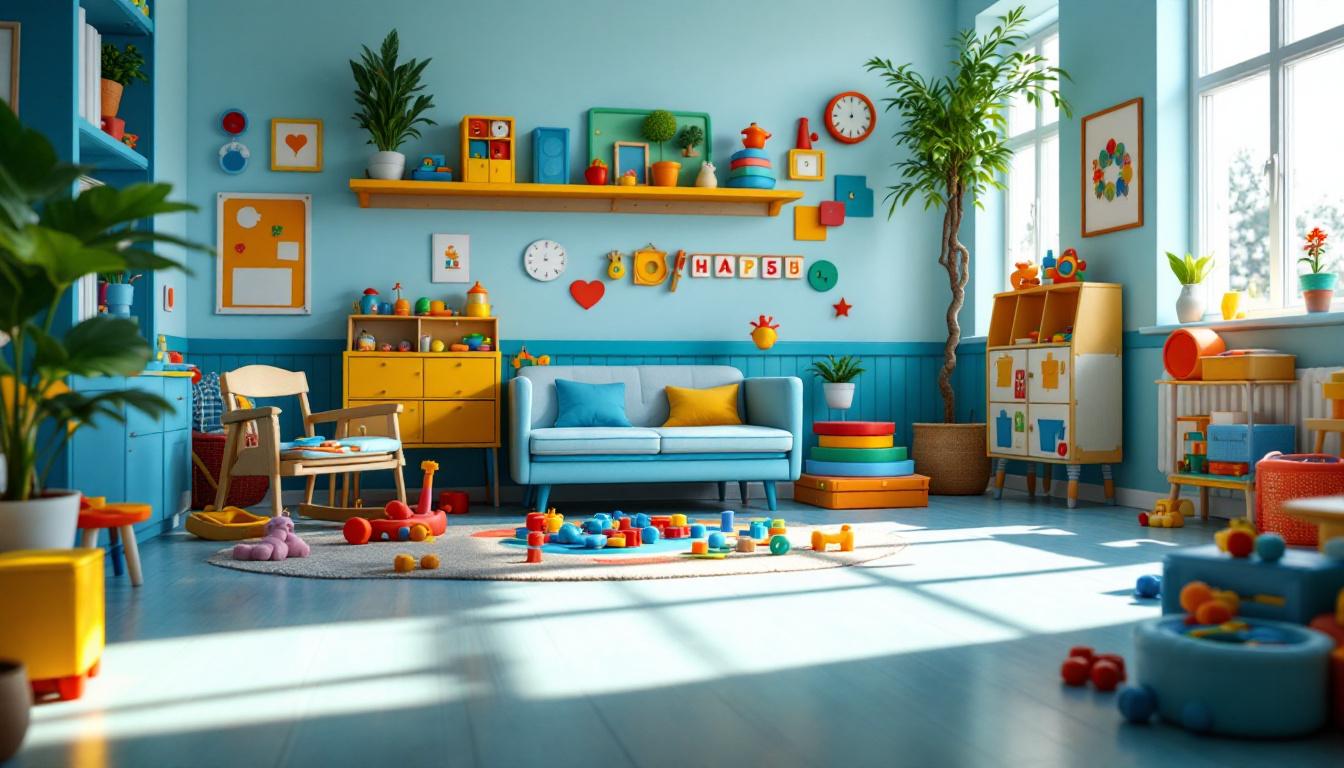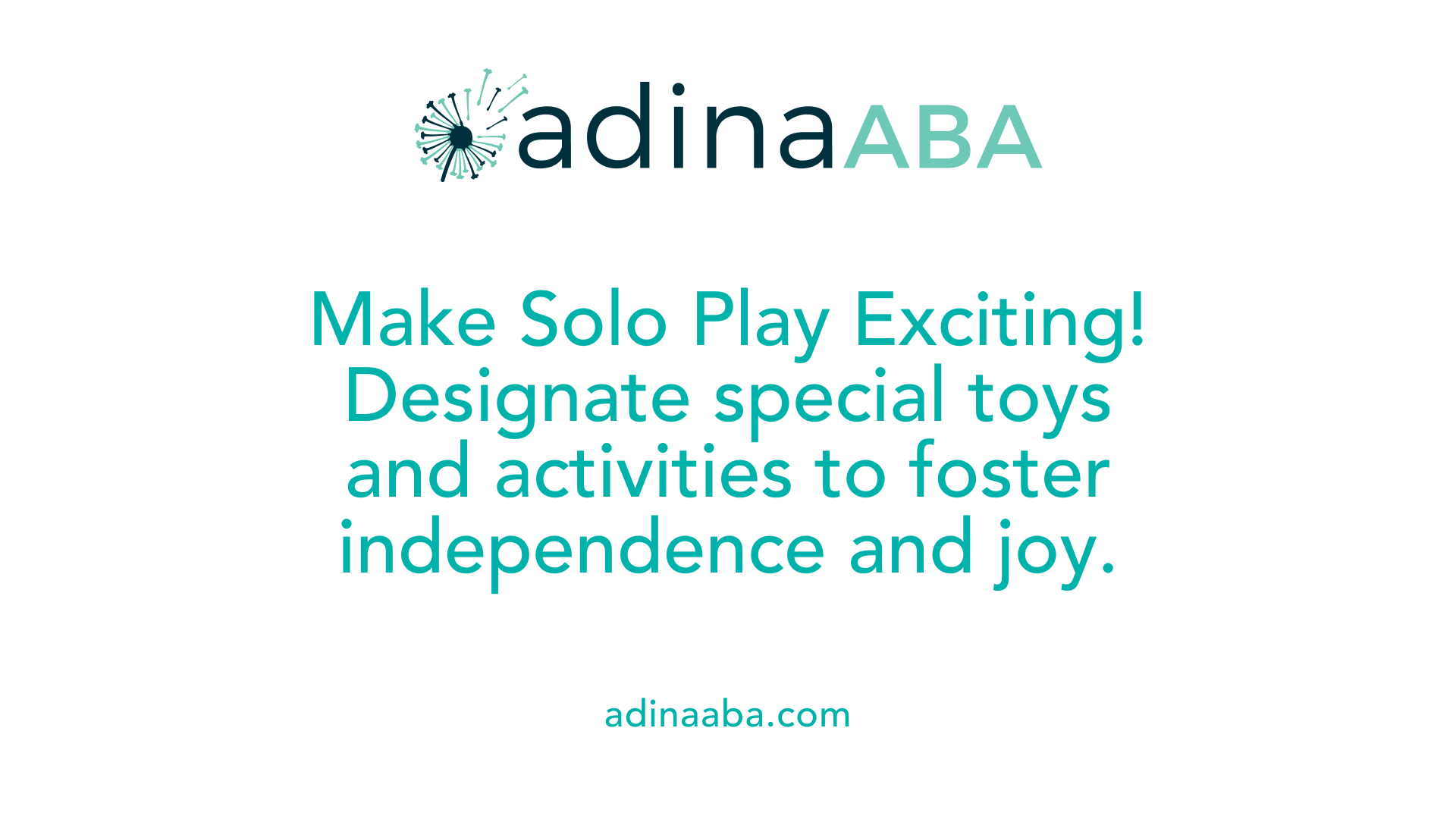Tips for reinforcing independent play

Understanding the Importance of Independent Play
Independent play is an essential component of childhood development, fostering autonomy, creativity, problem-solving skills, and emotional resilience. Supporting children in engaging in self-directed activities not only boosts their confidence but also lays the foundation for lifelong learning and adaptability. While developing independent play skills requires patience and strategic support, the benefits are profound, impacting cognitive, social, and emotional growth. This article offers a comprehensive guide to reinforcing independent play, highlighting effective strategies, environmental setups, and approaches aligned with child development principles.
Creating a Safe and Inviting Play Environment
Designing a 'Yes Space'
A crucial element in fostering independent play is establishing a 'Yes Space'—a dedicated, safe area filled with age-appropriate, open-ended toys. This space encourages children to explore freely without constant supervision, helping them develop confidence and focus. It is important to include toys like blocks, art supplies, or sensory materials that invite creative and self-directed activities.
Using Montessori Principles to Foster Independence
Inspired by Montessori methods, creating an environment with accessible shelves and child-sized tools helps children manage their own activities. Encouraging children to select their toys and participate in daily routines promotes responsibility and decision-making. Open-ended resources support problem-solving and imagination, essential for building independence.
Establishing Designated Play Zones
Setting up specific play zones around the home helps children understand boundaries and routines. Whether a corner in the living room or a section of a playroom, these zones should be organized with themed collections of toys that cater to different interests. Consistent placement creates familiarity and encourages prolonged engagement.
Rotating Toys to Maintain Interest
Regularly rotating toys according to developmental needs and interests prevents boredom and sustains curiosity. This also aligns with Montessori principles, fostering a deeper engagement with each item. A rotation schedule can keep play fresh while helping children focus on meaningful exploration.
How Early Can Parents Promote Independent Play?
Parents can begin encouraging independence from birth, initially with short, supervised periods of exploration. For infants, this might mean placing them in a playpen or on a blanket for a few minutes, gradually increasing as they grow more comfortable. Toddlers and preschoolers can handle longer sessions, sometimes up to 1.5 hours.
To do this effectively, create a safe environment with suitable toys, rotate options to sustain interest, and stay nearby but out of direct interference. Use visual timers or cues to help children understand when they are playing alone. Be patient, offer encouragement, and accept that varying ages present different challenges and milestones.
Challenges of Independent Play and Support Strategies
Young children often find independent play challenging due to limited attention spans, which are typically 5-8 minutes at age two, and separation anxiety. Caregivers can support this by establishing routines like a daily "work time" and providing inviting spaces such as a 'Yes Space'. Engaging in pretend play, modeling independence, and minimizing interruptions during play help build confidence.
Creating a nurturing environment where children feel secure and capable also reduces resistances. Consistent routines, positive reinforcement, and patience play a vital role in helping children develop their independent play skills.
The Role of Routine and Consistency

Scheduling daily independent play
Creating a consistent daily schedule helps children anticipate and prepare for independent play. Designate specific times, such as after breakfast or before dinner, for children to engage in solo activities. Starting with short periods, like five to ten minutes, and gradually increasing this duration as the child's confidence grows can build their independence and attention span.
Setting clear boundaries and expectations
Establishing simple rules and boundaries around independent play makes children feel secure and aware of what is expected. Use designated play spaces, such as a specific corner or room, and communicate these boundaries gently but firmly. This clarity encourages children to explore within safe limits and reinforces their understanding of appropriate solo play.
Using timers and visual cues
Timers or visual cues can effectively signal to children when independent play begins and ends. For very young children, a sand timer or a clock with clear images can serve as a gentle reminder of the duration. As children develop, explain that a timer will ring or a visual indicator will change when it is time to switch activities. These tools help children develop self-regulation skills and foster independence by making routines predictable and manageable.
By incorporating these practices into daily life, caregivers can support children in developing independent play skills gradually and confidently. Consistency and patience are essential, as creating reliable routines helps children feel secure and more willing to explore and enjoy solo activities.
Using Positive Reinforcement and Modeling

How can offering praise and encouragement support children's independent play?
Children thrive when they receive positive comments about their efforts. When parents or caregivers praise their child's independent activities, such as building a tower with blocks or exploring a new toy, it boosts confidence and motivation. Simple phrases like 'Great job!' or 'You’re really good at figuring that out!' help children associate independent play with positive feelings.
Why is modeling independent play behaviors effective?
Children learn a lot by watching adults. When parents demonstrate how to explore toys or engage in solo activities, children are more likely to imitate these behaviors. For example, stacking blocks or pretend cooking on their own can inspire children to try similar play without direct instructions.
How does describing play actions with enthusiasm encourage independence?
Describing what children are doing with excitement enhances their engagement and helps them understand their actions better. Saying things like, 'Look at you painting so creatively!' or 'You’re making a tall tower!' celebrates their exploration. This enthusiasm fosters a sense of achievement and encourages children to continue playing independently.
Encouraging Autonomy Through Choice and Responsibility
Providing meaningful choices
Encouraging children to make their own decisions fosters a sense of independence and self-reliance. Offering simple, developmentally appropriate options, like selecting which clothes to wear or choosing a toy to play with, empowers children and helps build decision-making skills. Creating a 'yes space' filled with safe, open-ended toys invites exploration and allows children to direct their own play, further enhancing their autonomy.
Involving children in chores and routines
Involving children in everyday chores and routines gives them a sense of contribution and control. Simple tasks such as setting the table, tidying up toys, or helping with laundry can build their confidence and sense of responsibility. These activities teach valuable life skills while reinforcing their role within the family unit.
Building confidence with small responsibilities
Starting with small responsibilities, like choosing their own snack or helping to water plants, nurtures confidence and independence. Using routines and scheduled playtimes helps children anticipate their activities and reinforces their ability to manage tasks independently. Positive reinforcement, such as praise or acknowledgment of effort, motivates children to embrace responsibilities and continue developing their autonomy.
| Approach | Examples | Benefits |
|---|---|---|
| Offering choices | Clothing, toys, activities | Decision-making skills, independence |
| Including in routines | Setting the table, tidying play area | Responsibility, self-confidence |
| Assigning small chores | Watering plants, feeding pets | Life skills, sense of contribution |
Building independence through these small but meaningful steps helps children develop resilience, problem-solving abilities, and confidence that serve them well as they grow.
Gradual Increase of Play Duration and Physical Distance
How can parents gradually increase independent play time?
Supporting children in developing independence often involves gradually increasing the amount of time they spend playing on their own. Start by setting a timer for a few minutes, such as five, and encourage your child to play independently during this period. As they become more comfortable, slowly extend the duration. Consistent praise and positive reinforcement when they successfully play alone help reinforce this behavior.
How can outdoor exploration foster independence?
Nature activities and outdoor exploration are excellent ways to build confidence and independence in children. When children play outside, they encounter new environments and challenges that require problem-solving and decision-making. Allowing them to explore with minimal intervention encourages self-reliance and curiosity. For example, setting up a safe corner in the yard with natural elements or simple outdoor toys can create opportunities for autonomous discovery.
How do I build comfort in separate spaces?
Creating separate but nearby spaces for play can help children feel secure while learning to play alone. For younger children, setting up a designated play area in the same room or close to your supervising space builds a sense of security. Use safe barriers like gates when needed, and ensure the area has engaging, age-appropriate toys that align with your child's interests. Over time, as children become accustomed to independent play, you can encourage them to explore slightly further away from you to deepen their independence.
Creating Special Toys and Activities
 Designating specific toys for independent play can make the activity more enticing for children. When children have a special set of toys or activities that are only used during solo playtime, it creates a sense of novelty and excitement.
Designating specific toys for independent play can make the activity more enticing for children. When children have a special set of toys or activities that are only used during solo playtime, it creates a sense of novelty and excitement.
Using open-ended toys, such as blocks, dress-up clothes, and art supplies, fosters creativity and allows children to explore different possibilities. These toys support problem-solving skills and encourage children to think independently.
Making activities feel special and rewarding helps children develop a positive attitude toward independent play. You can do this by setting up play stations with themed collections of toys, using sensory bins, or leaving out favorite items that they can explore on their own.
This targeted approach not only keeps children engaged but also strengthens their confidence in playing independently, laying a foundation for longer attention spans and a love for self-directed activities.
Supporting Emotional and Social Readiness

Validating children’s feelings
Recognizing and accepting children’s emotions is an essential foundation for developing their social and emotional skills. When children feel their feelings are acknowledged, they are more likely to develop self-awareness and emotional regulation. Simple responses like saying, "I see you're frustrated," or "It's okay to feel excited," help children understand that their emotions are normal and accepted.
Supporting emotional regulation during play
During play, children often experience various emotions, from joy to frustration. Caregivers can guide children in managing these feelings by being responsive and empathetic. For example, if a child becomes upset over a toy, calmly helping them take deep breaths or encouraging them to use words to express their feelings can promote self-control. Modeling calm behavior and patience during frustrating moments teaches children how to handle their emotions effectively.
Encouraging peer interactions and parallel play
Peer interactions are crucial for social development. Starting with parallel play, where children play side-by-side with similar toys without direct interaction, helps them gradually learn social cues and turn-taking. For instance, two children might play with blocks in the same area but focus on different tasks. These early interactions lay the groundwork for cooperative play and friendship skills later on. Creating safe, inviting spaces and offering guidance without interfering supports children in developing confidence to explore social relationships at their own pace.
Patience, Persistence, and Reflection
Understanding phases in independence development
Children's desire to explore and play independently naturally fluctuates. Recognizing that these phases are normal can help caregivers remain patient. For instance, some days a child might enthusiastically engage in solo play, while on others they might seek more supervision. Accepting this variability allows adults to provide consistent support without pressure.
Being patient and supportive during setbacks
Developing independence takes time and effort. Setbacks and challenges are part of the process. For example, a toddler might refuse to play alone after initially showing interest. During such times, patience and positive reinforcement are crucial. Avoid criticizing or rushing the child; instead, gently encourage and celebrate small successes to build confidence.
Reflecting on progress and adjusting strategies
Regularly evaluating what strategies work best is essential. If a child struggles with independent play, consider whether their environment is stimulating and safe. Adjust routines gradually, such as increasing play duration or introducing new toys that match their interests. Recognizing progress, no matter how small, motivates children and helps establish lasting play habits.
| Step | Action | Purpose | Tips |
|---|---|---|---|
| Understand phases | Observe and acknowledge changes | Support natural developmental shifts | Be flexible and patient with fluctuating independence |
| Support setbacks | Use positive reinforcement | Help children build resilience and confidence | Celebrate small wins and avoid criticism |
| Reflect and adjust | Review routines and environment | Enhance engagement and comfort | Try new activities or toys and note what works best |
Supporting children in developing independence with patience and thoughtful reflection helps foster resilient, confident, and self-reliant individuals.
Building Foundations for Lifelong Independence in Play
Supporting children through the journey of independent play requires time, patience, and a responsive, nurturing environment. By creating designated safe spaces, establishing routines, modeling positive behaviors, and gradually increasing opportunities for solo exploration, caregivers can foster a child's confidence and autonomy. Incorporating Montessori principles and tailoring strategies for children with developmental differences further enhances their engagement and skill development. Remember, the goal is to nurture a love for exploration and learning, helping children develop into confident, self-reliant individuals prepared to navigate their world with curiosity and independence.
References
- Encouraging Independent Play - Montessori in Real Life
- 3 Things a Parent Shouldn't Do When Teaching Independent Play
- 7 Research-Backed Tips for Encouraging Independent Play
- How To Encourage Your Child to Play Independently - WebMD
- Teaching independent play - Prevea Health
- Independent play for children with autism - Forta Health
- Simple Tips for Helping Toddlers Play Independently
- Encouraging Independent Play for Highly Attached Toddlers
- How to teach your toddler independent play - Lovevery Blog
More Resources
Expert Clinicians
Get started today ->






